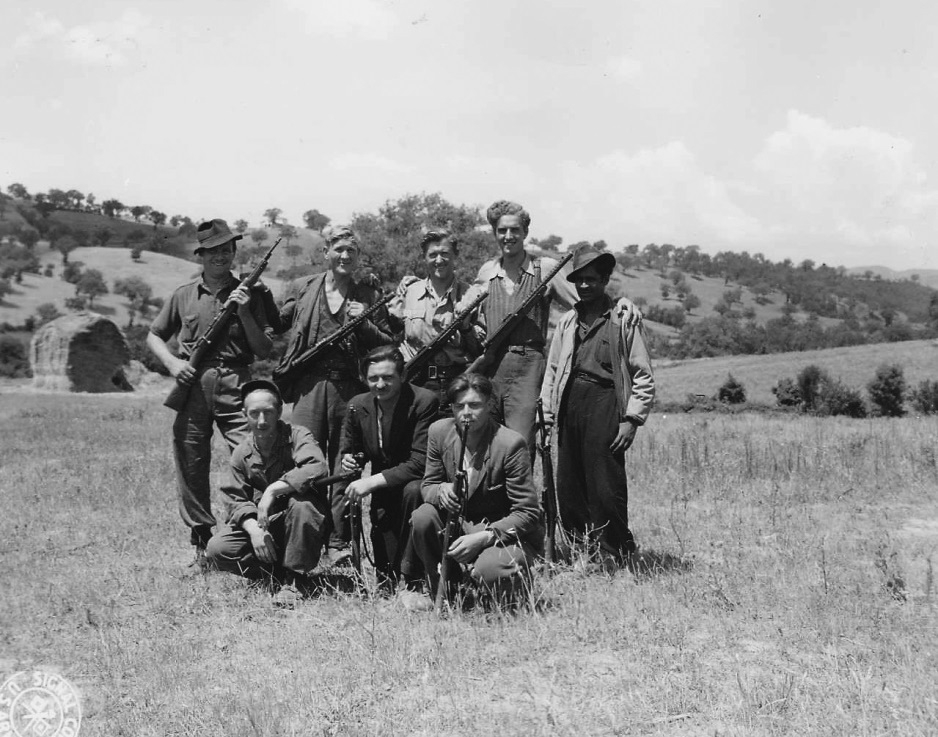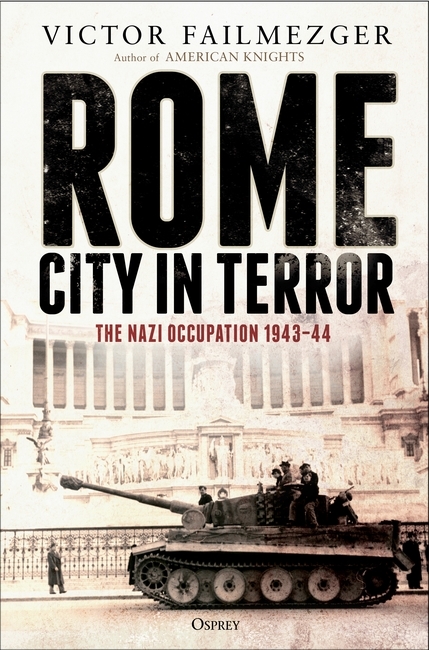From the street fighting that heralded the German occupation to the Gestapo repression that followed, Rome – City in Terror: The Nazi Occupation 1943–44 is the gripping story of the German occupation of Rome from the Italian armistice in September 1943 until the Allied liberation of the city on 5 June 1944. In today's blog post, author Victor Failmezger shares how the Allied POWs spent the holidays during the occupation.
After hearing that the British were giving a Christmas party for German POWs in England, the jolly and fat city commander of Rome, Luftwaffe General Kurt Mälzer, asked the Swiss Embassy to round up 150 Allied POWs for a special Christmas Day dinner. The tightly controlled event started at 15:00, when six large buses brought British and American POWs into the city from the transit POW camp at Cinecittà, an Italian film studio.

General Kurt Mälzer hugs babies and passes out bread in a publicity attempt to reverse anti-German sentiment during the food shortages. (Tompkins-NARA)
First the prisoners attended a religious service at the closed American church of Santa Susanna. The German press was on hand and broadcast the event on the radio. The POWs were then filmed to let the world see how well the Germans took care of their prisoners. At the end of the service they were marched up to Via Veneto with the soldiers singing the World War I song, It’s a long way to Tipperary. They were then escorted to the Hotel Regina dining room for a Christmas dinner of Irish stew and potatoes. Wine was on the tables and there was cake for dessert. General Mälzer stopped by and gave each prisoner a pack of cigarettes. One German officer commented: “The British boasted that they would be in Rome for Christmas, well, they have been here.” It was over by 18:00 and the prisoners were returned to internment at Cinecittà.
In the rest of the city there were now 80 British, American and French escapees hidden all across Rome by an organization called the Escape Line. It was run by ex-POWs and clergy from the confines of the Vatican. They made attempts to make Christmas festive despite the hazards of wartime Rome. One group of sympathetic women volunteered to prepare small Christmas gifts for the escapees. Each gift was accompanied by an English Christmas card.
At one religious house, following Catholic and Protestant Christmas services, the men sat down to a Christmas dinner of spaghetti, bread rolls, apples, chocolates and wine. Others were said to have spent a dull, bleak Christmas alleviated only by drinking much wine, but at least they were not in a prison camp.
On New Year’s Day 1944, several of the military leaders of the Escape Line decided to celebrate the occasion by attending the Rome Opera. Included in the group were four ex-POWS and Adrienne Lucidi, a beautiful, dark-haired French woman married to a key Escape Line helper. They wanted to usher in the New Year in style, and since cultural performances went on throughout the war, the gala New Year’s Day performance went on as scheduled. The Germans wanted life in the capital to appear as normal as possible.
The opera that day was Puccini’s Tosca and it was being sung by a stellar cast: the great Italian soprano Maria Caniglia, tenor Beniamino Gigli and baritone Tito Gobbi, all artists of legendary fame. The story of the opera, one British ex-POW observed: “was eerily evocative of our present situation. Rome, the locale of the historic plot, was dominated by local mercenaries of a foreign despot, Napoleon, a century earlier; the city trembled under the brutal command of its wicked police chief Scarpia [Kappler, the head of the Rome Gestapo, would now be that character’s name].”
Adrienne’s four ex-POWs were not the only escaped POWs in the theater for that performance. Several of the other attendees knew her and waved. Adrienne’s group was in a prominent box on the left side of the theater, two boxes away from the Royal Box. In that box sat a German general. Only a thin wall separated Adrienne’s group from some other high-ranking German staff officers in their dress uniforms.

A group of Allied ex-POWs acting as partisans north of Rome, June 21, 1944. The group was led by an American Ranger, S/Sgt. Robert Taylor, the tall man in the picture. Taylor was listed as killed at Cisterna. Other partisans in this photo were from South Africa, Russia and Poland. (NARA)
The former POWs were unnerved by the presence of German officers all around them, so they took seats in the back of the box where they could not be seen. The Germans did not notice them; they were looking at the beautiful Adrienne.
One German officer was obviously smitten by the vivacious Frenchwoman and he could not stop admiring her. During the second intermission, Adrienne plucked up her courage and asked the officer to autograph her program. It was a keepsake program for the first performance of the New Year, printed on parchment with gold embossed lettering and long silk cords, a real souvenir. Adrienne spoke to the officer in French. Charmed at her request, he said that it would be more appropriate if his general, the city commandant of Rome, General Mälzer, were to sign her program. He entered the Royal Box smartly, relayed Adrienne’s request and returned to her with the signature of the general who had styled himself as King of Rome. It was ironic that one of the general’s top priorities was to recapture escaped POWs and he was literally surrounded by them.
Order your copy of Rome – City in Terror: The Nazi Occupation 1943–44 now.


Comments
You must be logged in to comment on this post. Click here to log in.
Submit your comment